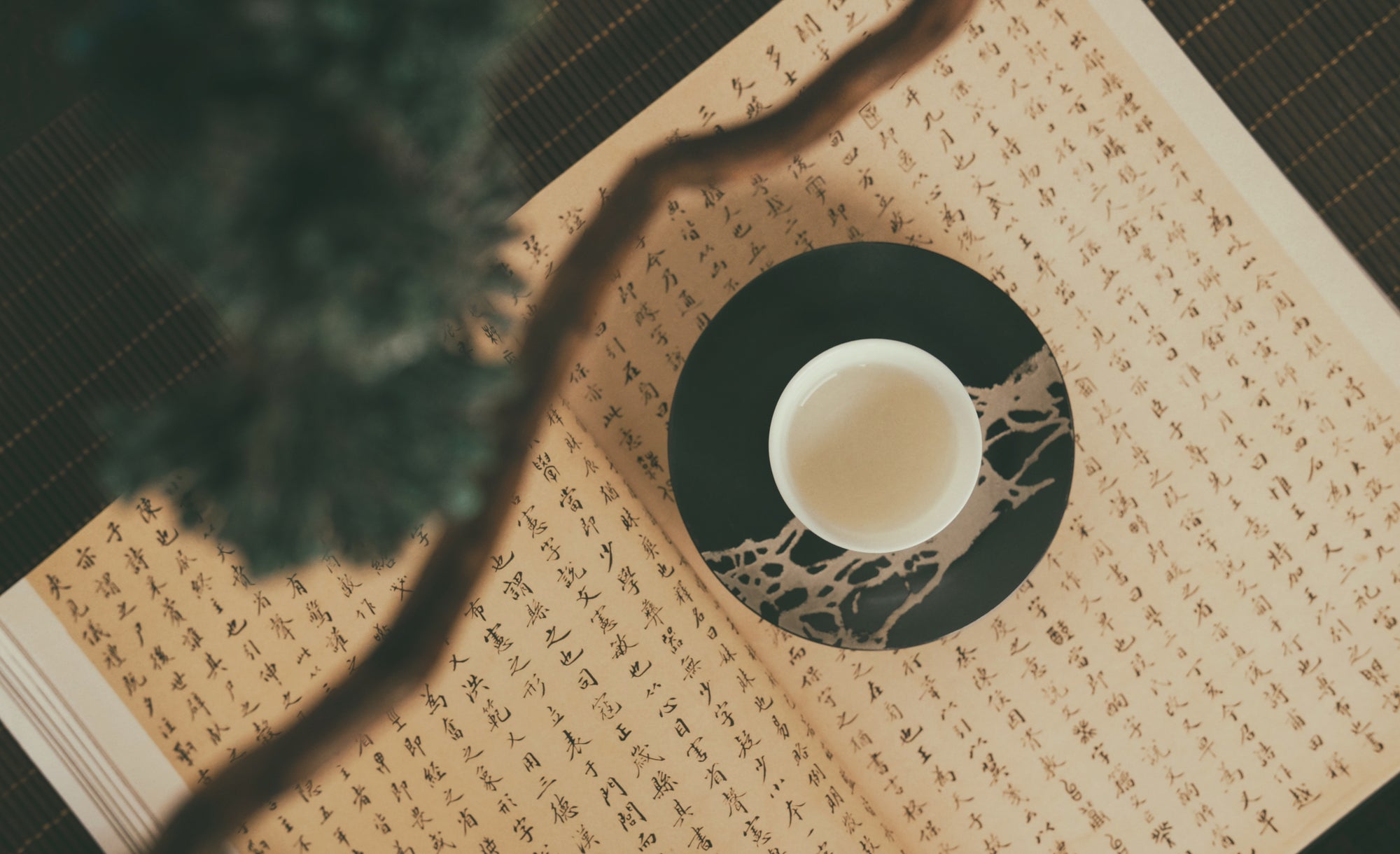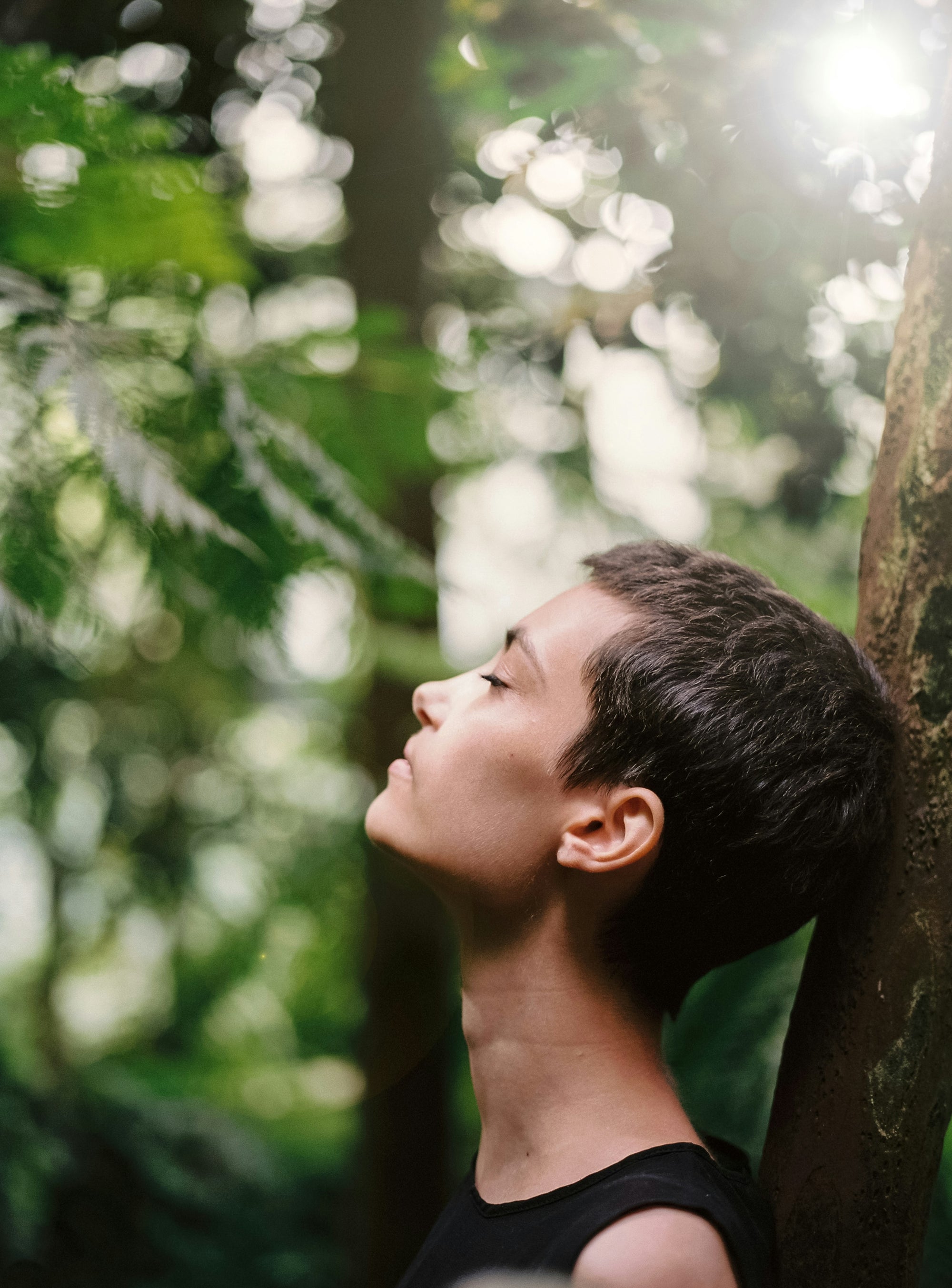The rich history of Traditional Chinese Medicine
In the heart of ancient China, nestled between mist-covered mountains and serene valleys, the practice of traditional Chinese medicine bloomed like a delicate lotus. The air hummed with the sweet scent of medicinal herbs, and wise sages, draped in flowing robes, moved gracefully through bustling marketplaces. TCM was not just a collection of remedies; it was a way of life, a philosophy deeply intertwined with the natural rhythms of the universe.
Herb markets displayed an array of exotic roots, leaves, and flowers, each with a story to tell about their healing properties. Acupuncture chambers echoed with the melodic hum of energy channels being rebalanced. In fragrant apothecaries, skilled herbalists concocted elixirs designed to harmonize the body's energies. The practice embraced the spirit of Yin and Yang, the delicate dance of opposites, seeking equilibrium in every aspect of life.
In ancient Chinese villages, TCM practitioners were revered as both healers and guardians of wisdom. Feng shui principles guided the layout of homes, emphasizing harmony with nature. Tai Chi echoed in the courtyards, a dance of slow, deliberate movements fostering both physical strength and mental serenity.
This ancient tapestry of holistic healing wove together the threads of nature, energy, and wisdom, creating a legacy that transcends time. The echoes of ancient Chinese medicine still resonate today, a testament to the enduring connection between humanity and the healing powers of the natural world.
Traditional Chinese Medicine (TCM) is an ancient practice that dates back thousands of years, and its approach to beauty is deeply intertwined with its holistic philosophy. In TCM, beauty is not merely about outward appearance, it is a reflection of one’s overall wellness and balance within the body. The foundational principles of TCM, such as the balance of Yin and Yang and the flow of Qi (vital energy), are applied to promote well-being, and this naturally extends to the realm of beauty.
TCM approaches beauty by promoting harmony throughout the body, including between body, mind, and spirit. The idea is that radiant skin, healthy hair, and overall physical appearance are indicators of internal balance and vitality. TCM believes that addressing and treating the root cause of imbalances, rather than just treating symptoms of issues, is the key to achieving long-lasting external beauty. The philosophy incorporates many methods to enhance beauty, including herbal medicine, acupuncture, dietary changes, and specific lifestyle practices.
Traditional Chinese Medicine also brings to attention the interconnectedness of the body’s systems, meaning emotional well-being and physical wellness are deeply connected. Practices like meditation, stress reduction, and adequate sleep are encouraged for their positive impact on overall health and beauty. Essentially, TCM’s approach to beauty is holistic, putting the whole person first and addressing the root causes of imperfections. We can learn so much from the legacy of thousands of years of TCM wisdom as we focus on cultivating beauty from within.
We only get to scratch the surface of the deep wealth of holistic beauty practices and recipes that are unique to ancient Asia. Traditional herbs, acupuncture, gua sha, and lifestyle factors are all key components of TCM’s approach to beauty.
The philosophy of beauty in Traditional Chinese Medicine
Before digging into the nitty gritty of ancient Traditional Chinese Medicine-inspired beauty practices, it is vitally important to understand the philosophy behind beauty in TCM, as it is very different from the Western approach to beauty. The West’s influence on beauty may be all you have ever been familiar with. As we already learned, TCM is inherently holistic, focussing on the interconnectedness of mind, body, and spirit. If there is an imbalance in one’s emotions, it could be affecting both the mind and external appearance. Without addressing the whole person, long-lasting external beauty simply cannot be fully achieved.
Traditional Chinese Medicine is guided by the principle of Yin and Yang, or balancing complementary opposites. Achieving harmony between Yin–associated with receptivity and nourishment–and Yang–associated with activity and energy–is essential for healthy, glowing skin.
Another guiding principle of TCM is the flow of Qi, which is vital energy. When there are disruptions to the flow of Qi, they can manifest as skin problems and other health and beauty issues. By balancing the harmonious flow of energy through acupuncture and herbal remedies, these issues can be resolved.
Herbs and nutrition are vital to understanding TCM’s approach to beauty. Since beauty is a reflection of internal health and wellness, adopting the right herbal and dietary regimen is required to achieve your beauty goals. Rather than merely treating symptoms or external aspects of beauty, TCM looks at beauty from the inside out. In contrast, Western medicine encourages quick fixes and redefines beauty to mean simply feeling beautiful. While there are certainly positive aspects of Western health and beauty, it is no surprise that it is not as effective at achieving long-lasting effects.
Yin and Yang foods to balance the body
In Traditional Chinese Medicine, the concept of Yin and Yang extends to dietary practices, emphasizing the balance of energies within the body. Foods are categorized as either Yin or Yang based on their inherent properties and achieving harmony between the two is crucial for overall well-being. Yang foods, associated with heat and energy, include ingredients like ginger, garlic, and certain meats. These foods are believed to warm and invigorate the body. On the other hand, Yin foods, linked to coolness and nourishment, encompass ingredients such as fruits, leafy greens, and tofu. They are thought to replenish fluids and cool the body. Achieving a Yin-Yang balance in one’s diet is seen as essential for maintaining harmony in the body. This balance is believed to promote optimal health and prevent imbalances that can lead to various health and beauty issues.
Examples of Yang foods include:
- Ginger: Revered for its warming properties, ginger stimulates circulation and digestion. It is applied to treat conditions associated with coldness in the body.
- Garlic: Garlic is believed to have properties that promote warmth and vitality. It is used for its ability to boost the immune system and improve circulation.
- Spices (cinnamon, black pepper, etc.): Many spices, particularly those with a warming nature like cinnamon and black pepper, are categorized as Yang foods. They provide energy and warmth to the body.
- Certain meats (lamb, venison, etc.): Meat from warm-blooded animals is believed to increase warmth and energy within the body.
- Onions: Onions also have a warming effect and are used in TCM to dispel coldness and promote circulation.
Examples of Yin foods include:
- Cucumbers: Cucumbers have a high water content and are considered cooling in nature. They are often used to hydrate the body and promote a sense of coolness.
- Watermelon: With its high water content and sweet taste, watermelon is classified as a Yin food. It's believed to have a cooling effect.
- Tofu: Tofu is considered a Yin food as it is derived from soybeans, which are associated with coolness in Traditional Chinese Medicine. Tofu is often used to balance the Yang nature of meats in a meal.
- Spinach: Leafy greens like spinach are considered Yin foods. They are rich in nutrients and have a cooling effect on the body.
- Mung Beans: Mung beans are believed to have a cooling effect and are often used in traditional Chinese soups and desserts. They are considered beneficial for balancing the body's Yin and Yang.

Embracing herbs used in Traditional Chinese Medicine for holistic beauty
Several herbs are highly valued by TCM for their beauty-enhancing properties. Different herbs are believed to accomplish different remedies. These herbs promote skin health, balance the body’s energy, and address underlying imbalances that may affect one’s appearance. Below are a few popular herbs used in TCM and their uses.
Each of these herbs can be used in a myriad of ways to achieve different desired outcomes. here are a few recipes that we love for holistic beauty incorporating each of the herbs. Here are a few examples of beauty recipes using the herbs mentioned above:
Goji Berry and Chrysanthemum tea
Ingredients:
- 1 Tablespoon of dried goji berries
- 1 Teaspoon of dried chrysanthemum flowers
- Honey (optional)
Instructions:
- Steep the goji berries and chrysanthemum flowers in hot water for 5-10 minutes.
- Strain the tea and add honey if desired.
- Enjoy this antioxidant-rich tea, believed to promote radiant skin.
White Peony and Astragalus facial mask
Ingredients:
- 1 Tablespoon of White Peony root powder
- 1 Tablespoon of Astragalus root powder
- Water or honey (to make a paste)
Instructions:
- Mix White Peony and Astragalus root powder with water or honey to create a paste.
- Apply the paste to your face, avoiding the eyes.
- Leave the mask on for 15-20 minutes.
- Rinse with warm water. This mask is believed to nourish the skin and promote a healthy complexion.
Schisandra Berry infused toner
Ingredients:
- 2 Tablespoons of dried Schisandra Berries
- 1 Cup of Witch Hazel
Instructions:
- Infuse dried Schisandra Berries in Witch Hazel for 1-2 weeks in a glass jar.
- Strain the liquid and transfer it to a spray bottle.
- Spray the toner on your face after cleansing. Schisandra is believed to promote skin health and balance.

Traditional Chinese Medicine facial rejuvenation techniques
Gua sha is an ancient technique rooted in Chinese tradition, but has recently been gaining popularity in the holistic beauty community. The idea is to use a smooth, rounded tool, typically made of jade or rose quartz, to gently scrape the surface of the skin to stimulate blood flow and lymphatic drainage. The practice, beyond its traditional therapeutic uses, is recognized for its remarkable ability to improve skin elasticity and circulation. The gentle yet firm strokes of the tool encourage the flow of vital energy, or Qi, beneath the skin's surface, facilitating the removal of toxins and enhancing nutrient delivery to skin cells. Regular gua sha sessions are thought to reduce puffiness, sculpt facial contours, and impart a radiant, youthful complexion. This practice serves as one of the many ways to achieve balance between inner and outer wellness. In addition to beauty, gua sha can also be used to treat some health concerns and pain. Read this article to get started.
Facial acupuncture is another time-honored tradition of ancient Traditional Chinese Medicine for its holistic and rejuvenating anti-aging properties. This practice involves inserting very thin needles into the facial skin at strategic locations to stimulate Qi, promoting vitality and balance. The microtraumas induced by these tiny needles prompt the skin to boost collagen and elastin production, fostering a natural and sustainable lift. Beyond the physical benefits, facial acupuncture also addresses the holistic concept of beauty in Traditional Chinese Medicine, considering the interplay of Yin and Yang energies for overall well-being. By harmonizing the body's internal balance, facial acupuncture not only diminishes the appearance of fine lines and wrinkles but also imparts a radiant and youthful glow, reflecting the inherent connection between inner health and outer beauty. However, any type of acupuncture is best left to experts. Do not try this practice at home, rather find a competent TCM practitioner, or read more about facial acupuncture here.

Holistic beauty lifestyle practices for inner balance
As we have already seen, in the realm of Traditional Chinese Medicine beauty is a reflection of inner balance and wellness. Western culture is just starting to grasp the importance of lifestyle on beauty. Physical, mental, and emotional health reflect on the outside of a person. Being inundated with mental stress will certainly show symptoms in even the most beautiful of us. TCM does not take a cookie-cutter approach to lifestyle factors, but there are a few guiding principles that we can learn from ancient wisdom.
Diet and lifestyle are key to TCM beauty. The balance of Yin and Yang energies is reflected in dietary choices that promote harmony within the body. Nutrient-dense foods, herbal infusions, and regular eating habits are believed to nourish vital Qi, enhance blood circulation, and contribute to the equilibrium necessary for radiant skin. Going hand-in-hand with diet is the importance of mindful movement. What we consider dieting and exercising in Western culture, TCM views as nourishment and intentional use of the body to achieve balance, harmony, and rejuvenation.
Sleep and daily routines in TCM philosophy are paramount to achieving the balance between physical, mental, and emotional health and beauty. Sleep and daily rituals are protected from the various demands of life that compete for our attention. By incorporating these schedules, structure is built into one’s life. These dependable rituals allow the body to rest and heal itself, rather than being stretched beyond what is realistic by the demands of work, family, and life.
Internal wellness does not just refer to the physical internal mechanisms of the body. Mental and emotional wellness are essential to achieving the balance between internal and external. TCM promotes mindfulness and stress reduction techniques to achieve radiant skin and other beautifying benefits. Stress, both mental and emotional, is considered a major disruptor of Qi flow, leading to imbalances that can manifest as skin issues. Incorporating mindfulness practices, such as meditation, deep breathing, or Qi Gong, helps restore harmony within the body. By managing stress and fostering a calm mind, individuals not only promote mental well-being but also contribute to the health and vibrancy of their skin.
The holistic perspective of Traditional Chinese Medicine underscores the interconnectedness of mind, body, and spirit, affirming that true beauty emerges from nurturing both internal and external balance.
Closing thoughts on Traditional Chinese Medicine beauty
In the captivating tapestry of Traditional Chinese Medicine, the philosophy of beauty intricately weaves together a holistic approach that transcends the superficial and delves into the very essence of well-being. Beauty, according to TCM, is a reflection of the harmonious interplay between Yin and Yang, the balance of Qi (vital energy), and the intricate connection of body, mind, and spirit. TCM’s timeless wisdom sees beauty as a manifestation of inner balance and vitality. Throughout our exploration of age-old beauty practices inspired by TCM, we have journeyed through the significance of herbs, acupuncture, and mindful practices. Gua sha and facial acupuncture have emerged from the ancient past as profound techniques, not only for enhancing external allure but for fostering internal equilibrium.
As we embrace these ancient traditions, we are reminded that beauty is not a mere cosmetic endeavor but a holistic journey. The herbs we consume, the rituals we adopt, and the thoughts we nurture contribute to a radiant tapestry of well-being that transcends time. Let us embark on this holistic beauty journey with reverence for the ancient wisdom of TCM, cherishing the interconnection of our inner and outer selves, and celebrating the timeless allure that blooms when we cultivate beauty from within.
Disclaimer: The information provided in this blog post is for educational and informational purposes only. While we strive to provide accurate and up-to-date information, the content is not a substitute for professional medical advice. Medical concerns should be addressed by qualified healthcare professionals. The authors and publishers of this blog post are not responsible for any actions taken by readers based on the information provided herein. Health-related decisions should be made with careful consideration of individual circumstances and in consultation with appropriate healthcare professionals.



